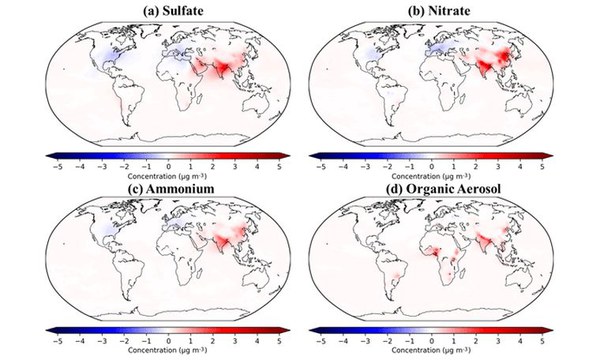Aerosol composition trends during 2000–2020: in-depth insights from model predictions and multiple worldwide near-surface observation datasets
Tsimpidi, A. P., Scholz, S. M. C., Milousis, A., Mihalopoulos, N., and Karydis, V. A.
Abstract

Atmospheric aerosols significantly impact Earth's climate and air quality. In addition to their number and mass concentrations, chemical composition influences their environmental effects. This study examines global trends in aerosol composition from 2000 to 2020, using the EMAC atmospheric chemistry–climate model and a variety of observational datasets. These include PM2.5 surface data from regional networks and 744 PM1 datasets from 169 aerosol mass spectrometer (AMS) field campaigns worldwide. Organic aerosol (OA) is the dominant fine aerosol component across all continents, particularly in areas with significant biomass burning and biogenic volatile organic compound (VOC) emissions. EMAC reproduces the prevalence of secondary OA but underestimates OA aging, revealing uncertainties in distinguishing fresh versus aged secondary organic aerosol (SOA). Although sulfate remains a major component in filter-based observations, both AMS measurements and model simulations reveal that nitrate has emerged as the dominant aerosol species in Europe and Eastern Asia over the past decade, except in summer. Mineral dust also contributes significantly to specific regions, as highlighted by EMAC. The study identifies substantial declines in sulfate, nitrate, and ammonium in Europe and North America, attributed to emission controls, though EMAC underestimates these reductions, especially sulfate, due to discrepancies in early 2000s levels. In Eastern Asia, sulfate reductions due to SO2 controls are partially captured. OA trends differ between methodologies, with filter data showing slight decreases, while AMS and model results suggest slight increases in PM1 OA across Europe, North America, and Eastern Asia. These findings underscore the need for integrating advanced models and diverse datasets to better understand aerosol trends and guide environmental policy.
